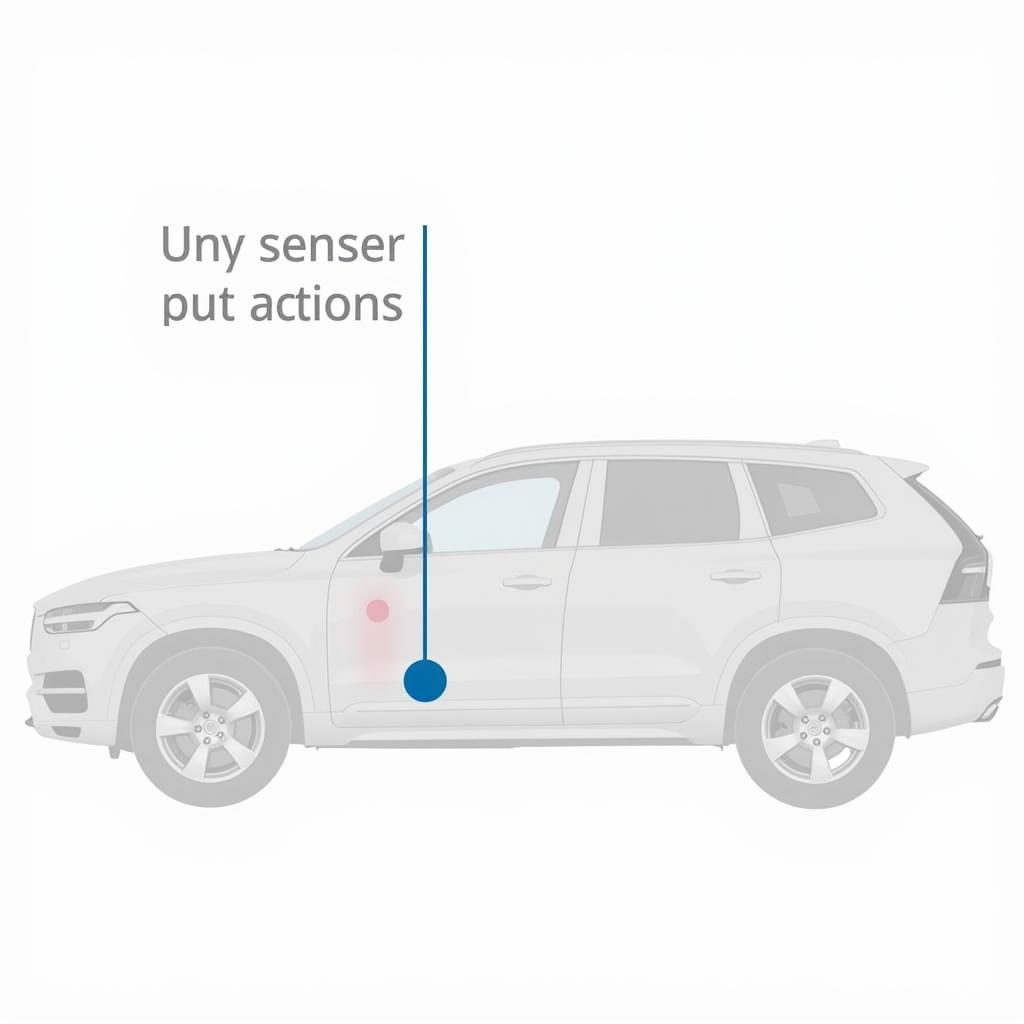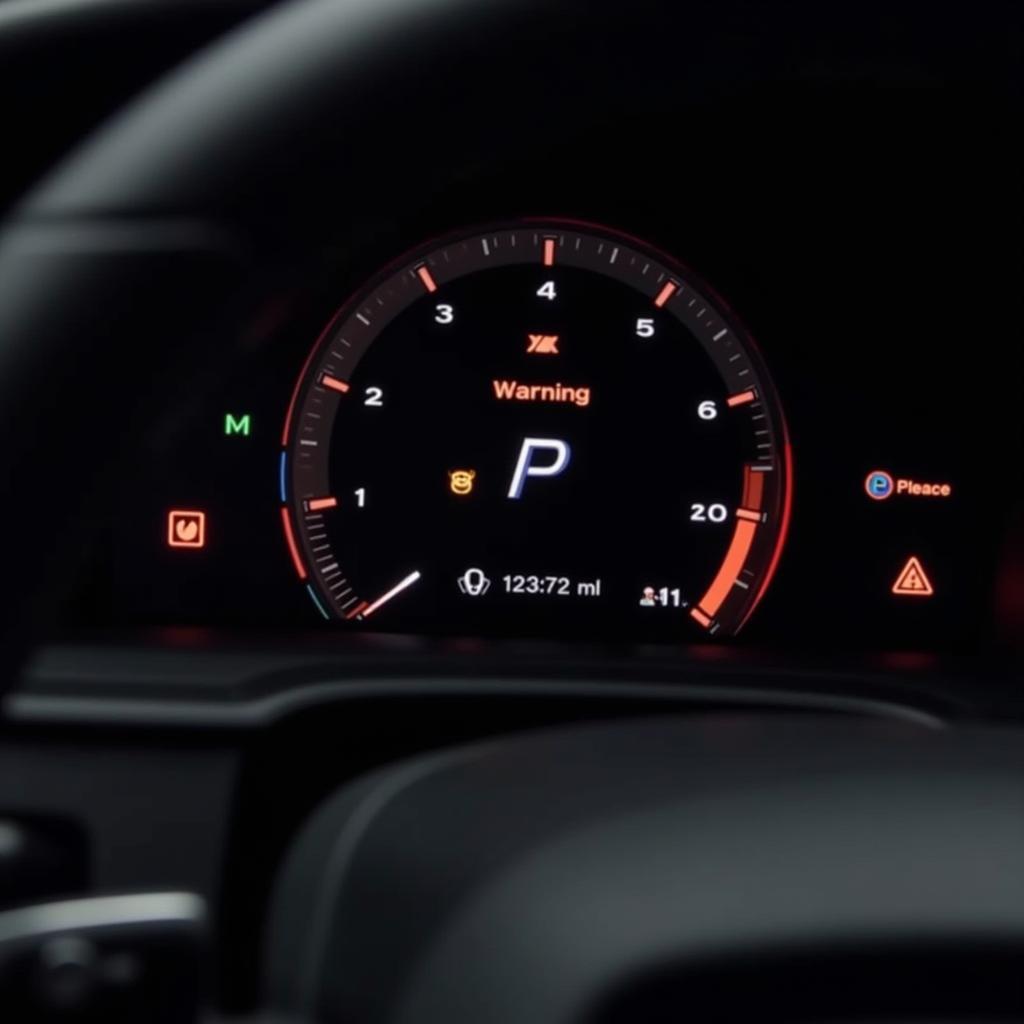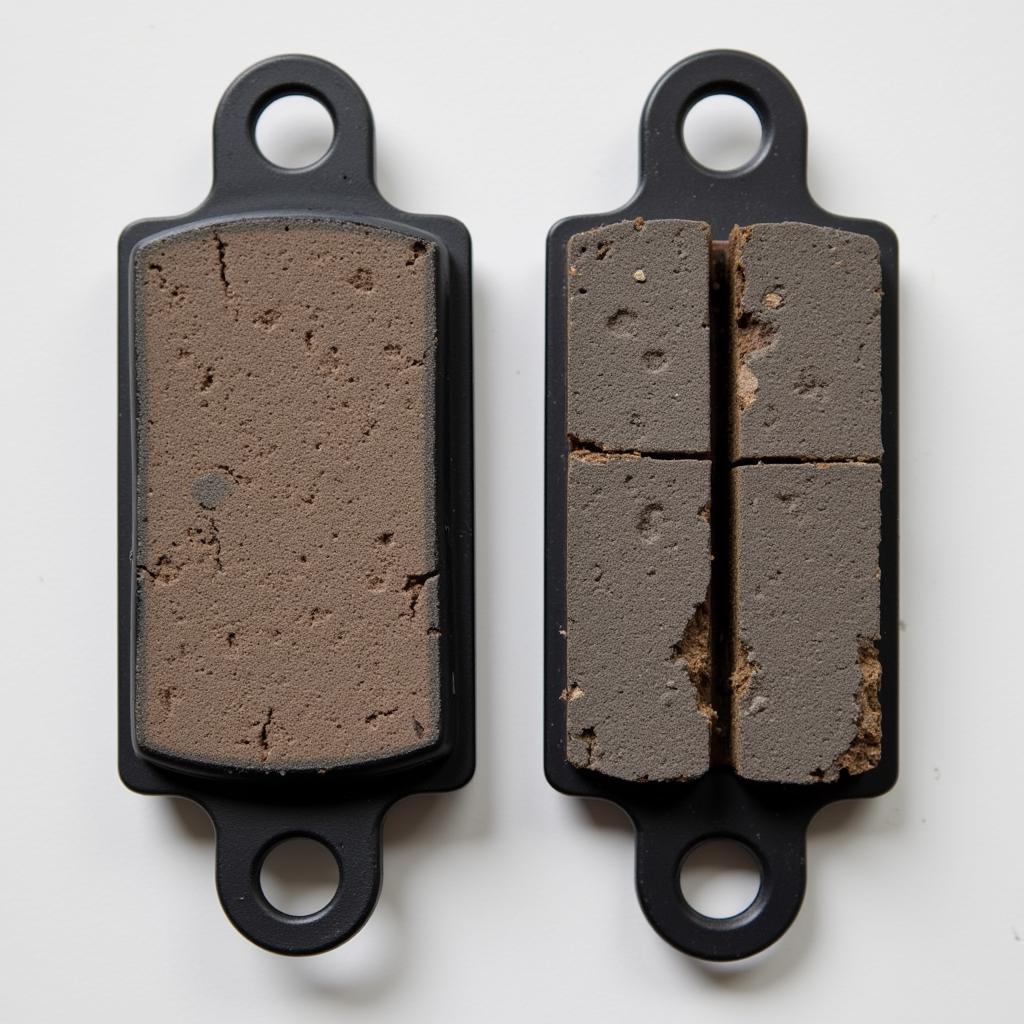The Volvo Collision Warning with Full Auto Brake is a sophisticated safety system designed to prevent or mitigate collisions. However, when this system malfunctions, it can lead to confusion and concern for Volvo drivers. This guide will delve into the intricacies of the “collision warning and emergency brake” system, offering insights into its functionality, potential issues, and solutions.
 Volvo Collision Warning System in Action
Volvo Collision Warning System in Action
Understanding Your Volvo’s Safety Suite
Volvo has been a pioneer in automotive safety for decades, and the “collision warning and emergency brake” system is a testament to their commitment. This system utilizes a combination of radar and camera technology to monitor the road ahead. If the system detects an imminent collision with a vehicle, pedestrian, cyclist, or large animal, it alerts the driver and can even autonomously apply the brakes.
How the System Works:
- Detection: The radar and camera continuously scan the area in front of your Volvo.
- Assessment: The system calculates the distance to objects, their speed, and your Volvo’s trajectory to determine the risk of a collision.
- Warning: If a collision is deemed imminent, the system issues a series of alerts, including audible warnings, visual cues on the dashboard, and even a brief tightening of the front seatbelts.
- Brake Support: If the driver reacts by braking, the system provides brake support, ensuring maximum braking force is applied.
- Autonomous Emergency Braking (AEB): If the driver fails to react, the system can autonomously apply the brakes to help avoid or mitigate the severity of the collision.
Common Issues with the Collision Warning and Emergency Brake System
While the “collision warning and emergency brake” system is generally reliable, like any complex technology, it can experience issues. Here are some common problems Volvo owners might encounter:
- False Warnings: Environmental factors like heavy rain, snow, or fog can interfere with the sensors, leading to false warnings.
- System Malfunctions: A malfunctioning sensor, software glitch, or electrical issue can cause the system to behave erratically or become disabled.
- Sensor Obstructions: Dirt, debris, or even stickers on the windshield near the camera can obstruct the sensors, affecting the system’s accuracy.
 Location of Sensors for Collision Warning System
Location of Sensors for Collision Warning System
“Many drivers don’t realize that even a minor misalignment during a routine service can affect these sensitive safety systems,” says Daniel Taylor, a senior Volvo technician with over 15 years of experience. “It’s crucial to have the system calibrated by trained professionals after any work that involves the front end or windshield.”
Troubleshooting and Solutions
If you experience problems with your Volvo’s “collision warning and emergency brake” system, it’s crucial to address them promptly.
- Check for Obstructions: Regularly clean the area around the sensors on the front grille and windshield. Ensure there are no stickers or other obstructions blocking the camera’s view.
- Restart the System: Sometimes, a simple system restart can resolve temporary glitches. Turn off your car, wait a few minutes, and then restart it.
- Consult Your Owner’s Manual: Your owner’s manual contains valuable information about the system’s operation and troubleshooting steps.
- Seek Professional Help: For persistent issues or suspected malfunctions, contact your local Volvo dealer or a qualified mechanic specializing in Volvo diagnostics.
collision warning met full auto brake
The Importance of Regular Maintenance
Regular maintenance plays a crucial role in keeping your Volvo’s “collision warning and emergency brake” system functioning correctly.
- Software Updates: Volvo periodically releases software updates that may improve the system’s performance or address known issues.
- Sensor Calibration: The sensors may require calibration after a windshield replacement or any work done to the front end of the vehicle.
- Professional Inspections: Having the system inspected by a qualified technician during routine maintenance can help identify and address potential problems early on.
Embracing Advanced Safety for Peace of Mind
The “collision warning and emergency brake” system is a testament to Volvo’s commitment to safety. Understanding its functionality, potential issues, and the importance of maintenance ensures that this life-saving technology continues to operate at its best, providing you with peace of mind on every journey.
 Dashboard Warning Lights for Collision Warning System
Dashboard Warning Lights for Collision Warning System
FAQ
1. Can I temporarily disable the “collision warning and emergency brake” system?
Yes, most Volvo models allow you to temporarily disable the system through the vehicle’s settings menu. However, it’s generally not recommended to drive with the system deactivated.
2. Does the system work at night or in low-light conditions?
The system is designed to function effectively in various lighting conditions, including night driving.
3. Can the system distinguish between a real obstacle and something like a shadow or reflection?
The system is sophisticated but not perfect. While it’s designed to differentiate between genuine obstacles and false positives, there might be instances where it misinterprets shadows or reflections.
4. What should I do after a collision where the system activated?
It’s essential to have the system inspected by a qualified Volvo technician after any collision, even if there is no visible damage to the vehicle.
5. Will using my Volvo’s “collision warning and emergency brake” system affect my insurance rates?
While insurance policies vary, many insurers offer discounts for vehicles equipped with advanced safety features like Volvo’s collision avoidance system.

